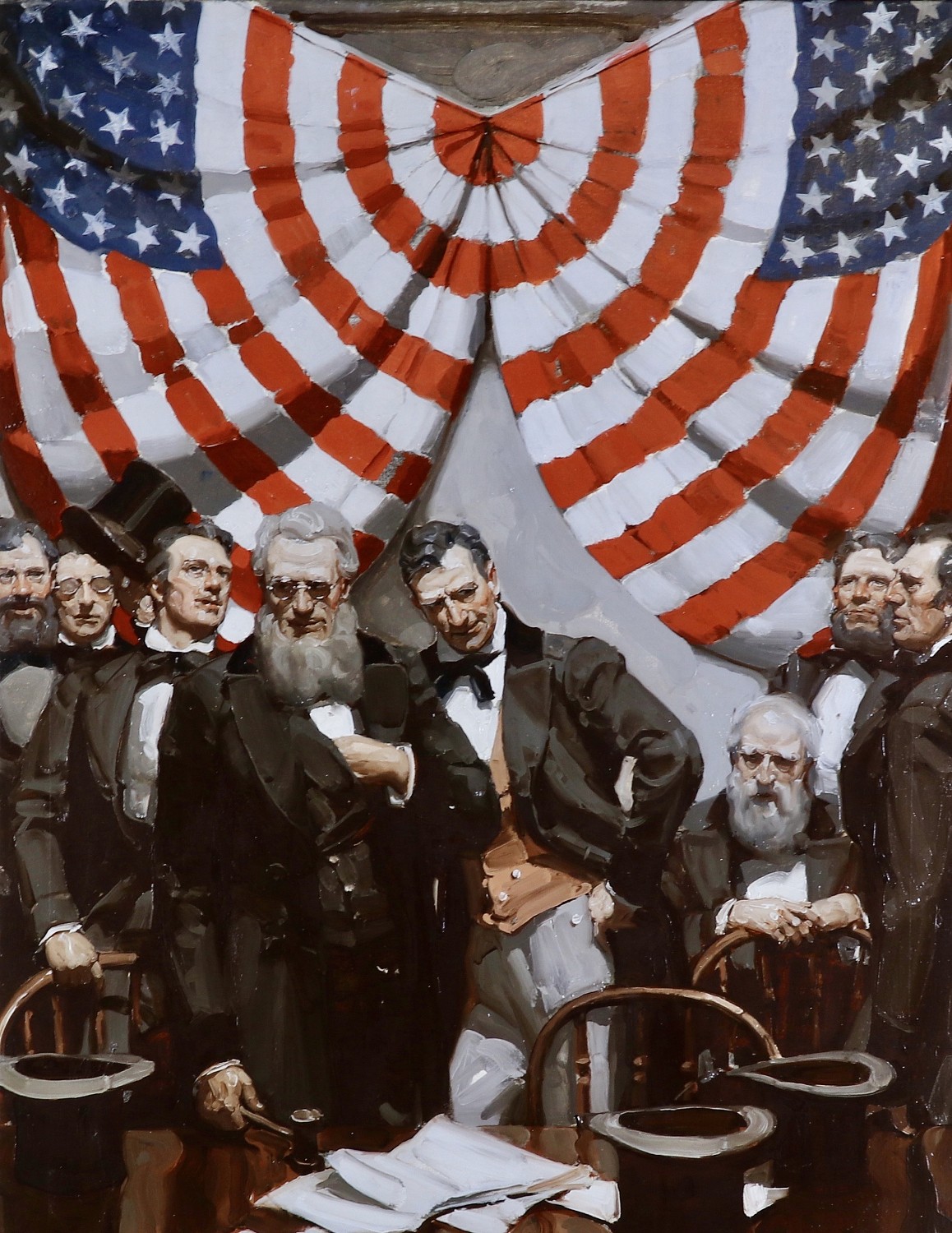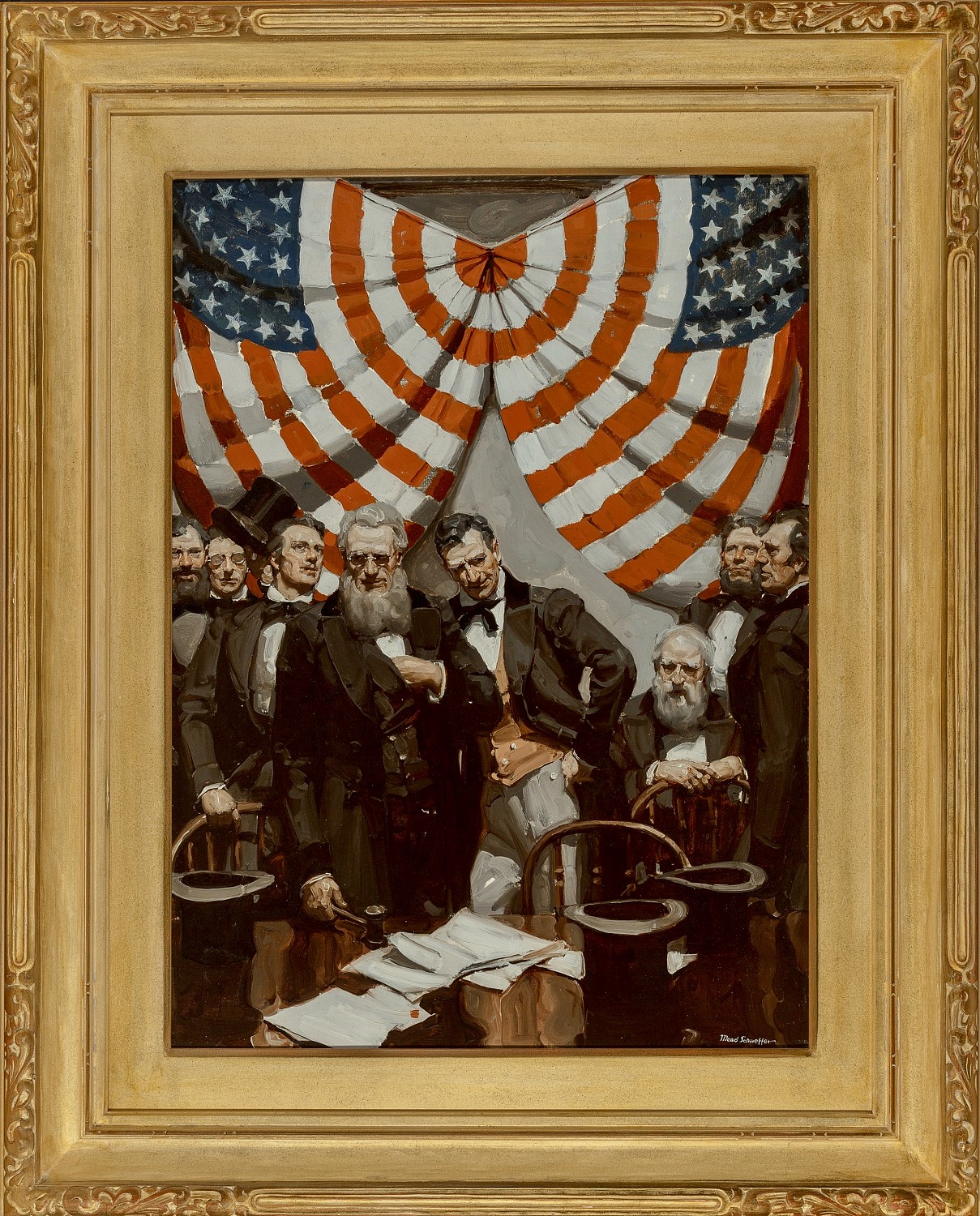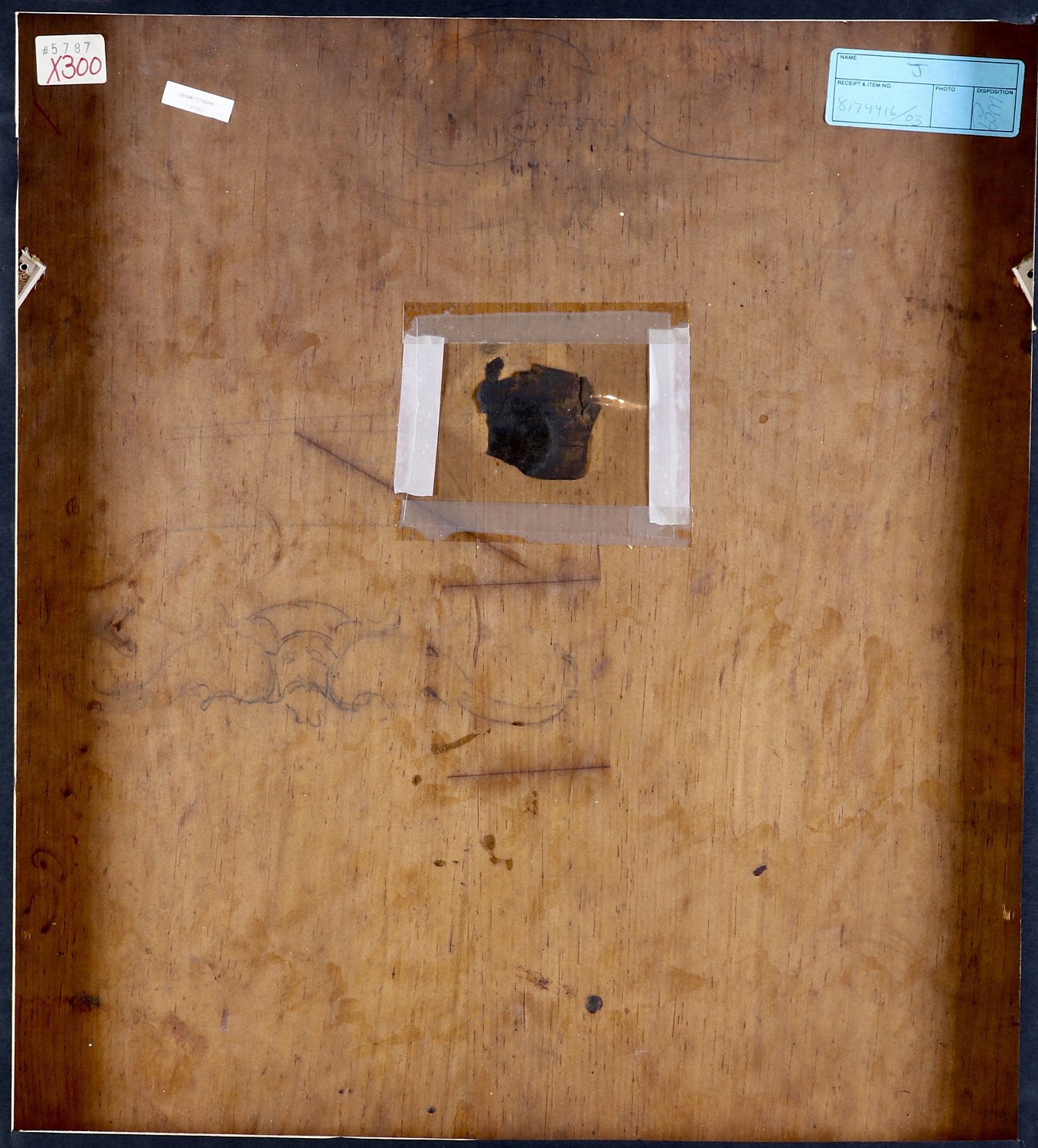"Head Tide, Good Housekeeping, Story Illustration" Lot no. 4135
By Mead Schaeffer (American- 1898-1980)
1932 (Estimated)
38.25" x 28.00"
Oil on Canvas
Signed Lower Right
REQUEST PRICE
PURCHASE REQUEST
A close friend of Norman Rockwell, Mead Schaeffer focused his early career on illustrations for classic, historical, and adventure novels, including Moby Dick, The Count of Monte Christo, and King Arthur and His Knights. The featured lot, a masterpiece of political intrigue, was published as a story illustration for Joseph C. Lincoln's novel Head Tide, serialized in Good Housekeeping in 1932. Set in the fictional town of Wellmouth, Cape Cod, in the late 1870s, Head Tide centers on the efforts of the local newspaper owner to present in an unbiased fashion the platforms of the Republican candidates running for a seat in the Massachusetts Legislature. Primarily at stake are the interests of Wellmouth's elite -- the Four Cornersmen -- versus those of the town's shipping class -- the South Siders.
This particular illustration for Head Tide depicts a critical moment in the Republican caucus, organized to nominate a candidate for the House of Representatives and to elect delegates to the state convention. Grouped in front of a monumental American flag are the key members of the Four Corners establishment: with his signature grey beard, powerful Joel "Judge" Dean, the town's leading attorney and the chairman of the Republican committee; earnestly leaning toward Dean, Cornelius Haven, the local bank cashier and committee secretary; and seated, venerable Manasseh Eldredge, the wealthy shop owner. Flanking these central figures are other members of the Four Corners Republican guard, whose distinction and influence Schaeffer emphasizes in their formal suits and upright stature. Nonetheless, the group expresses collective worry at this moment, as a caucus member from the working-class South Side challenges their proposed list of delegates and threatens to foil their political victory: "The tumult and disorder spread, and after a whispered consultation with Cornelius Haven, Judge Dean rose and pounded with his gavel. 'A moment,' he shouted. 'Mr. Haven has a word to say. Will you grant him the courtesy of silence?'" (M. Schaeffer, Head Tide, New York, 1932, p. 236).
Explore related art collections: Patriotic/Political / Historical / Men / 1930s
See all original artwork by Mead Schaeffer
ABOUT THE ARTIST
The work of Mead Schaeffer divides itself into two periods. The early one deals with romantic, swashbuckling and theatrical subjects. The second, although still strong and dramatic, is based on authentic, factual themes and is more reportorial.
Born in Freedom Plains, New York, he studied at Pratt Institute, and got advice from Harvey Dunn and Dean Cornwell. A brilliant student, he was illustrating for major magazines while still in his twenties and had begun a series of sixteen illustrated classics for Dodd, Mead, including The Count of Monte Cristo, Les Miserables, Typee and Moby Dick. Eventually, he wanted to deal with contemporary subjects that he could personally observe and learn about.
With this objective, Schaeffer began to paint covers for The Saturday Evening Post, which by 1940 was featuring themes of Americana. The Post’s artists traveled to various parts of the country to find regional material with national appeal. Schaeffer made an extended trip to the West with his friend and fellow-artist Norman Rockwell. From this and other trips, many fine covers resulted.
During World War II, Mead painted a notable series of Post covers of American soldiers representing various branches of the service. The paintings were done with the full approval and cooperation of the United States military authorities, who provided all the facilities. In researching the pictures, Schaeffer rode abroad a submarine, a Coast Guard patrol boat and various aircraft. Later, under the sponsorship of the Post, the paintings were exhibited in more than ninety cities in the United States and Canada in promoting the war effort. They are now part of the permanent collection of the USAA, an association of military officers, former officers and their families, in San Antonio, Texas.
In other exhibitions, Schaeffer won the Salmagundi Club’s Shaw Prize in 1930, and a Gold Medal at the Pennsylvania Academy of the Fine Arts in 1944.





